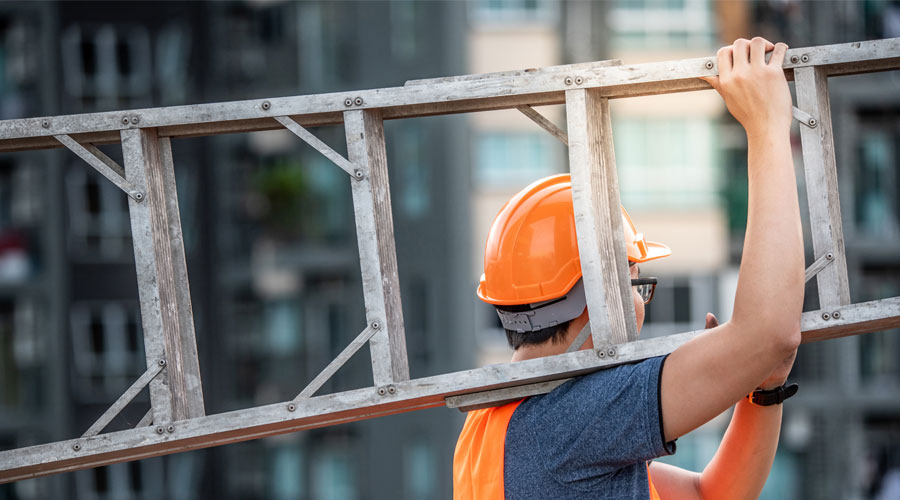
Ensuring Ladder Safety
March is National Ladder Safety Month. This annual campaign aims to raise awareness of the importance of ladder safety and encourage individuals and organizations to minimize ladder-related hazards and injuries.
According to the Canadian Centre for Occupational Health and Safety, falls from elevated surfaces, including ladders, are the second largest cause of accidental death in Canada.
Many accidents involving ladders occur from a failure to follow basic safety protocols. To help prevent ladder injuries this month (and every month), employees like you can practice the following safety tips:
- Select the correct ladder for the job. Check the length and duty rating. The proper length is a minimum of 1 metre extending over the working surface.
- Inspect your ladder before each use. Be sure to look for the following loose or damaged parts:
- Steps
- Rungs
- Spreaders
- Safety feet
- Clear your work area. Never place a ladder in front of a door that isn’t locked, blocked or guarded. Because metal ladders conduct electricity, use a wooden or fibreglass ladder near power lines or electrical equipment.
- Ensure a safe setup. Before placing extension ladders on steady surfaces, check that all locks are correctly engaged. The ground underneath a ladder should be level and firm. Large, flat wooden boards braced underneath a ladder can help level it on an uneven surface or soft ground. Straight, single or extension ladders should be set up at an approximate 75-degree angle.
- Exercise caution. Make sure the weight that your ladder is supporting does not exceed its maximum load rating (user plus materials). Keep your body centred between the rails of the ladder at all times. Do not lean too far to the side while working; never overreach. Instead, descend from the ladder and move it to a better position. Never leave a raised ladder unattended.
- Climb carefully. Wear nonslip shoes whenever you use a ladder. Do not step on the top step or bucket shelf or attempt to climb or stand on the rear section of a stepladder. Always face the ladder when climbing up or down. Slowly step down from a ladder if you feel dizzy or tired.
Reach out to your supervisor if you have any further questions about ladder safety.
For more information on risk management or to find out how to reduce your insurance costs call CMB at 780.424.2727 or click here to get a quote.
